The NQS mandates services to take an active role in caring for the environment and contributing to a sustainable future. According to NQS Standard 3, Element 3.2.3, “The service cares for the environment and supports children to become environmentally responsible.” The following article provides information on Understanding Sustainability, Sustainability Ideas For Early Childhood Services and Sustainability Learning For Children.
Even beyond regulatory requirements, it is important for childcare services to practice sustainability so that children not only get first-hand lessons in environment-friendly practices but get a chance to grow up in a healthier world. Here are then an overview of sustainability practices that providers and educators can implement in their childcare settings.
Understanding Sustainability
When striving for sustainability in your service, a useful place to start is by reflecting on what and how much you understand about sustainability. According to the UN World Commission on Environment and Development: “sustainable development is a development that meets the needs of the present without compromising the ability of future generations to meet their own needs.” This understanding of sustainability is deeply pertinent in the childcare context whose primary responsibility is the well-being of children – the “future generations”. Fully comprehending the core and nuances of sustainability will not only help educators contextualise sustainable practices in childcare but also keep up with newly emerging information on global warming, reducing resources and other aspects of the environment.
Sustainability Ideas For Early Childhood Services
- Look for ways to eliminate single-use plastics from the service set by using containers and bags made from natural materials and fibres like recycled paper, cloth, and jute among others.
- As far as practically possible, replace single-use cleaning materials with reusable ones like those made from cloth, though these will have to be disinfected properly.
- Stop buying cleaning products that harm the environment. Most of these chemical cleaning products contain hazardous compounds that when washed into rivers and streams pollute the water bodies and destroy aquatic life. Opt for sustainable alternatives instead, that use bio-based solvents from citrus, seed, vegetable and pine oils. Green cleaning refers to using environmentally friendly ingredients and procedures while cleaning, which are healthier and safer for us and the environment.
- Use recycled toilet paper and tissues; when you need to take printouts for children’s games and activities, check if you can use recycled printing paper. Ensure that they are forest-friendly to optimum sustainability.
- Buy locally-made products for your service so that there is minimum packaging.
- Design environments with natural light and ventilation so that energy use can be minimised. Install a rainwater tank for water play and gardening. Repair leaks in time so that water is not wasted.
- Get the administration and other staff on board to devise Sustainability policy and procedures. Demonstrating your commitment to sustainability by conducting a sustainability audit on water use, energy use, chemical use, biodiversity and purchasing. Use such policies to get solar panels for sustainable energy requirements or buys from only those suppliers that are committed to sustainable production practices.
- Disseminate your service’s actions on sustainability by posting pictures of such practices inside the entrance of centres or where they can be easily seen by families. Make sustainability part of your regular communications to parents, either by incorporating sustainability into your regular newsletter or by creating a dedicated sustainability newsletter.
Sustainability Learning For Children
The other aspect of sustainable practices in childcare is teaching children the importance of protecting the environment. The children in your care today are the very adults who, if the exploitation of the planet does not abate now, will be inheriting a depleted planet. Hence it is crucial that children learn the skills to practice a sustainable existence.
- One of the most effective ways to teach sustainability to children is for educators to role model the same practices, like switching off lights and fans in rooms that are not being used. Educators should encourage parents to role model sustainable practices at home, for example, being mindful when buying groceries and clothes or repairing broken things, rather than throwing them away, especially in cases where their lifespans can be extended. Such practices will minimise wastage in an increasingly disposable culture.
- Children will really learn sustainability only when it is made part of their day to day experiences. So instead of just talking about the importance of plants and trees, get children involved in the regular upkeep of garden by making watering and weeding part of regular outdoor hours. In fact, creating a vegetable patch or at least a herb garden can be a great way for children to experience the entire cycle of growing food. As children sow the seeds, and water, care for the plants, then harvest the vegetables or fruits and finally, use them in their recipes, they learn to appreciate the hard work involved in growing food and feel responsible for nurturing their environment.
- Use such activities to open up conversations around food production and climate change: How long do you think this zucchini will take to grow big enough to eat? What would happen if there was not enough rain to water the garden? What would happen if the vegetable patch was flooded with too much water? Such discussions will help children think about the importance of sustainability and environmental threats like global warming.
- Teach children energy and water conservation practices. Turn off appliances and devices like computers and printers when not in use. Turning off taps and using half-flush are other ways of conserving water. Show children how to empty out containers after water-play experiences to water the garden. Also making water available in limited quantities, for example, a container per child, helps children learn that they need to use it wisely, and provides an opportunity for intentional conservation.
- Opt for sustainable play materials like wooden toys and blocks, loose parts like yarn, clay, string, fabric, cardboard, foam or old household items like wrapping paper, wallpaper, ribbon, decorations. Encourage children to play with natural materials such as pine cones, twigs, dried leaves, logs and sand. In fact clay and wet sand are natural materials that make for a great sculpting and modelling medium. Set off for nature walks where children explore different textures through plants, worms, and forest floors rather than expensive, store-bought equipment.
- Look for ways you can incorporate recycling into daily learning practices. Show children how to segregate organic and inorganic waste and which bin is for what waste. In fact involving them in the process can even be extended into scientific concepts like living versus non-living beings. The service can also organise visits to the community’s recycling centre to educate children on the importance of recycling and show them where the waste ends up. Yet another useful way to embed recycling practices is to start composting project whereby food scraps can be used to nourish gardens which in turn help grow food ingredients. Make things even more exciting by installing a worm farm so that children not only learn how to recycle organic food matter but also have fun with worms and are able to see in action, the interconnectedness of all living things.
- Adopt locally relevant sustainable practices into your service – these could range from popularising a recycling station where families drop off recyclable items to starting a garden to the plate project or a community garden. If deforestation has been an issue in your area, set out with your little learners to plant native trees or flowering bushes. Where possible, integrate indigenous knowledge and ways of understanding which are deeply respectful of and connected to the land and environment.
- Depute children as energy savers or water savers on a rotational basis. Such children can have the job of noticing which lights and fans are left on or taps turned on when not in use. Apart from instilling the habit of conservation, it will also teach children to carry out responsibilities.
- Use favourite stories and narratives to facilitate discussions with children on sustainable challenges and practices. These could be part of story-hour where educators can read books on environment-friendly themes or narrate Dreamtime stories or watch movies on wildlife conservation themes. Well-known classics such as Where the Wild Things Are and Charlotte’s Web could be great choices to start the conversation about the importance of living sustainably. Integrate such discussions with art, music, dance and drama so that sustainability is not just a matter of anxiety, but an opportunity to be creative and have fun.
- Teach children to connect sustainability to their own community. Design classroom environment to display locally relevant issues and information like posters of local plants and wildlife or teaching children local bin colours and recycling systems. Also, plan activities which encourage children to think of solutions. On your next neighbourhood walk or school trip, for example, tell children to look for a problem in the environment. Once you return to the classroom, ask them about what they have noticed like perhaps littering that makes neighbourhoods dirty or pollution that makes some children cough and eyes water. Then get them to think about real-time solutions that can contribute to making things better like putting trash in bins or switching off car engines at traffic lights. Apart from directly engaging with sustainable issues, such exercises will help children develop observation and problem solving skills as well.
- To make sustainable practices in your service truly relevant, it is necessary to get families and the wider community involved. Set out a box on the clean-out day and ask students and parents to drop in unwanted items like half-used crayons, coloured pencils, and notebooks in it. These can be utilized in the coming school year or donated to others. In the community, encourage families to start an exchange clothing program so that they can reuse clothes, thereby minimising the waste in the environment.
- Teach children about recycling - it's an important concept that teaches children to care for the environment. It encourages children to be responsible and show a growing appreciation for Earth.
Teaching children about sustainability enables them to appreciate and respect the natural environment. Early childhood services can provide meaningful hands-on learning experiences in order for children to become environmentally responsible.
Sustainability in early childhood education is an important part of the curriculum and should be incorporated into each and every service setting.
References:
What Is Sustainability, UCLA
Quality Area 3 Physical Environment, ACECQA


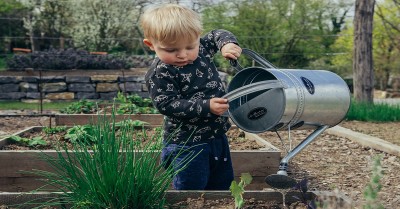
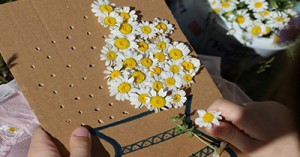
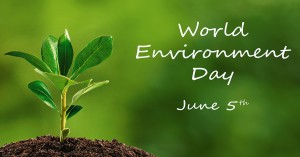
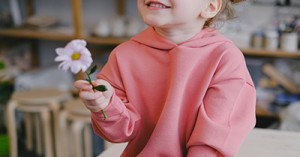
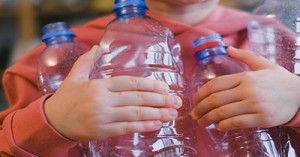
 As an Educator in Australia, your pay rate falls under the Children’s Services Award 2010. This award states the minimum amount that an employer can
As an Educator in Australia, your pay rate falls under the Children’s Services Award 2010. This award states the minimum amount that an employer can When working as a qualified Early Childhood Teacher (with a university degree) within a service, your rate of pay will come from the Educational Services
When working as a qualified Early Childhood Teacher (with a university degree) within a service, your rate of pay will come from the Educational Services When working as a Diploma Qualified Educator your pay rate is from the Children's Services Award 2010. This Award states your minimum rate of pay
When working as a Diploma Qualified Educator your pay rate is from the Children's Services Award 2010. This Award states your minimum rate of pay When working as a Cert 3 Qualified Educator, your pay rate is from the Children's Services Award 2010. This Award states your minimum rate of
When working as a Cert 3 Qualified Educator, your pay rate is from the Children's Services Award 2010. This Award states your minimum rate of Educational Leaders play a crucial role in their early childhood service by ensuring that the educational program aligns with best practices and supports the holistic
Educational Leaders play a crucial role in their early childhood service by ensuring that the educational program aligns with best practices and supports the holistic In early childhood education and care, ratios are more than a technicality—they are a frontline safeguard. Every child deserves responsive supervision, emotional connection, and developmental
In early childhood education and care, ratios are more than a technicality—they are a frontline safeguard. Every child deserves responsive supervision, emotional connection, and developmental With the new national child safety reforms kicking in on 1 September 2025, early childhood services like yours have a real opportunity to lead the
With the new national child safety reforms kicking in on 1 September 2025, early childhood services like yours have a real opportunity to lead the Here’s a comprehensive Mobile Phone and Smart Watch Policy tailored for early childhood education and care (ECEC) services in Australia, aligned with the latest 2025
Here’s a comprehensive Mobile Phone and Smart Watch Policy tailored for early childhood education and care (ECEC) services in Australia, aligned with the latest 2025 The Sea of Fish Challenge is a national initiative that invites children, educators, families, and communities to create and display fish artworks as a symbol
The Sea of Fish Challenge is a national initiative that invites children, educators, families, and communities to create and display fish artworks as a symbol Across the early childhood education and care sector, educators are sounding the alarm: current staffing ratios are insufficient to deliver safe, meaningful, and developmentally appropriate
Across the early childhood education and care sector, educators are sounding the alarm: current staffing ratios are insufficient to deliver safe, meaningful, and developmentally appropriate


